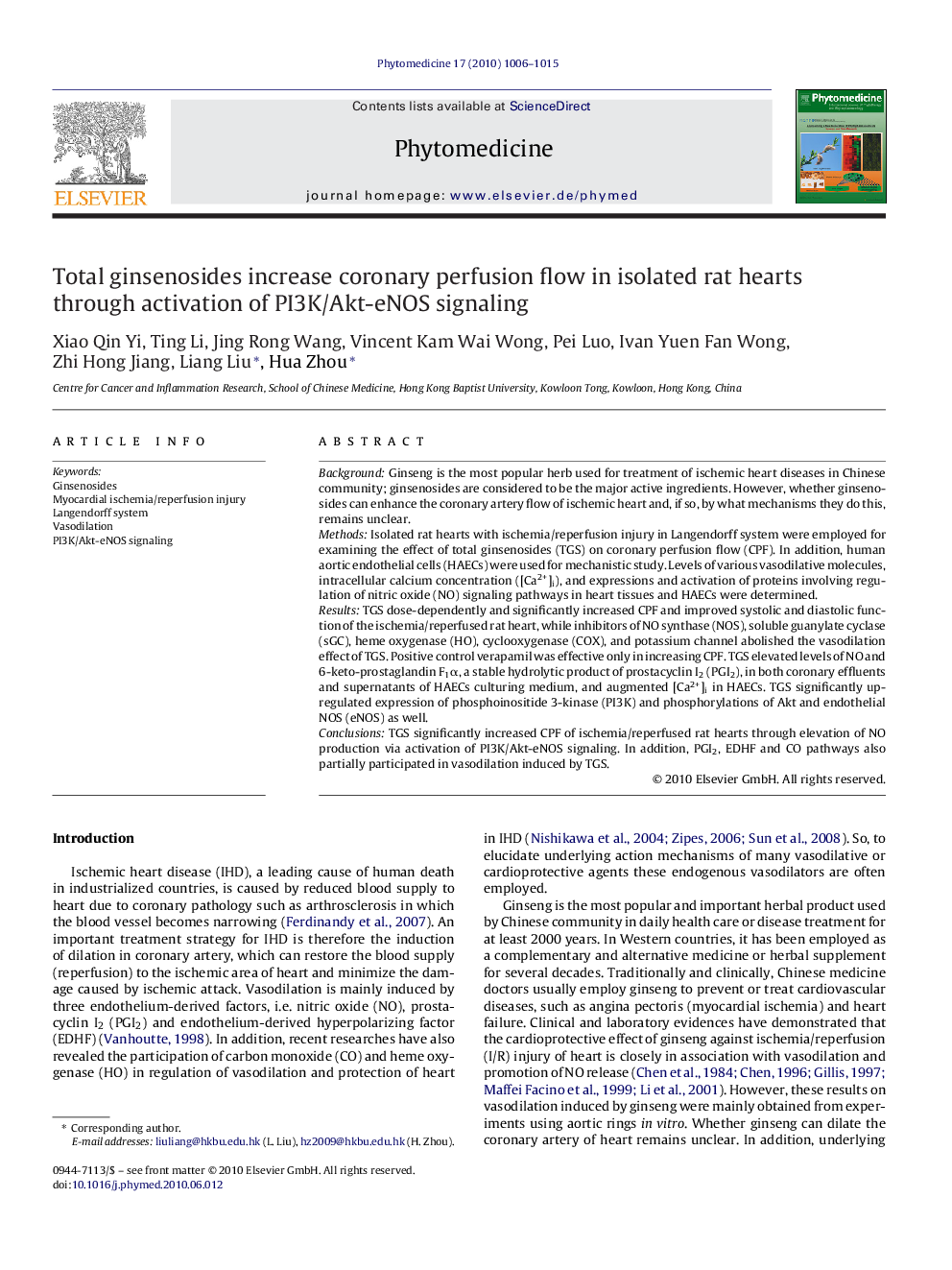| Article ID | Journal | Published Year | Pages | File Type |
|---|---|---|---|---|
| 2497130 | Phytomedicine | 2010 | 10 Pages |
BackgroundGinseng is the most popular herb used for treatment of ischemic heart diseases in Chinese community; ginsenosides are considered to be the major active ingredients. However, whether ginsenosides can enhance the coronary artery flow of ischemic heart and, if so, by what mechanisms they do this, remains unclear.MethodsIsolated rat hearts with ischemia/reperfusion injury in Langendorff system were employed for examining the effect of total ginsenosides (TGS) on coronary perfusion flow (CPF). In addition, human aortic endothelial cells (HAECs) were used for mechanistic study. Levels of various vasodilative molecules, intracellular calcium concentration ([Ca2+]i), and expressions and activation of proteins involving regulation of nitric oxide (NO) signaling pathways in heart tissues and HAECs were determined.ResultsTGS dose-dependently and significantly increased CPF and improved systolic and diastolic function of the ischemia/reperfused rat heart, while inhibitors of NO synthase (NOS), soluble guanylate cyclase (sGC), heme oxygenase (HO), cyclooxygenase (COX), and potassium channel abolished the vasodilation effect of TGS. Positive control verapamil was effective only in increasing CPF. TGS elevated levels of NO and 6-keto-prostaglandin F1α, a stable hydrolytic product of prostacyclin I2 (PGI2), in both coronary effluents and supernatants of HAECs culturing medium, and augmented [Ca2+]i in HAECs. TGS significantly up-regulated expression of phosphoinositide 3-kinase (PI3K) and phosphorylations of Akt and endothelial NOS (eNOS) as well.ConclusionsTGS significantly increased CPF of ischemia/reperfused rat hearts through elevation of NO production via activation of PI3K/Akt-eNOS signaling. In addition, PGI2, EDHF and CO pathways also partially participated in vasodilation induced by TGS.
